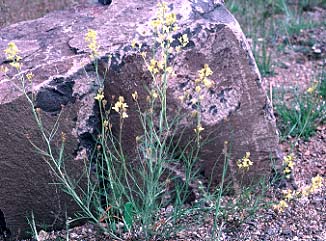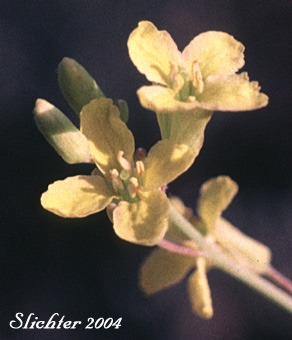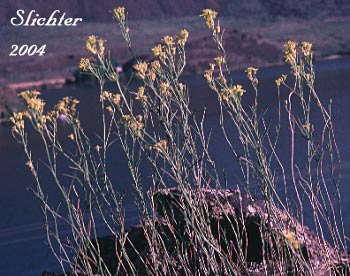

 The
photo at right shows a close-up of the flowers of plains mustard as seen at Sun
Lakes State Park in central Washington............May 2, 1998.
The
photo at right shows a close-up of the flowers of plains mustard as seen at Sun
Lakes State Park in central Washington............May 2, 1998.
Plains mustard is also known as lava cress. It is a rhizomatous perennial with erect or lax, broom-like stems from 20-80 cm tall. The stems are usually unbranched, though loose branching may occur. The stems and leaves are glabrous and often glaucous. The leaves are simple and linear, from 2-9 cm long and 1-4 mm wide with entire margins the norm, although some serration or pinnatifid lobes may occur (See photo below.). The basal leaves have usually shriveled and dried up by the time plants bloom. The few stem leaves are closely ascending.
The racemes are long with yellow flowers. The slender pedicels are 5-10 mm long and mostly glabrous. The 4 yellowish sepals are 4-5 mm long and the 4 petals are slightly longer at 6-10 mm. The petals are yellow. The anthers on each of the 6 stamens are about 2 mm long. The stigma is 2-lobed. The seed capsules are thin siliques, which are held nearly erect. They are typically 4-sided and range from 2.5-5 cm long and about 1 mm wide.
Plains mustard is a plant of sagebrush plains, grasslands, and the lower mountains.
Plains mustard is found east of the Cascade Mts. from British Columbia south through Washington and Oregon to Nevada, and east to Montana and New Mexico.
